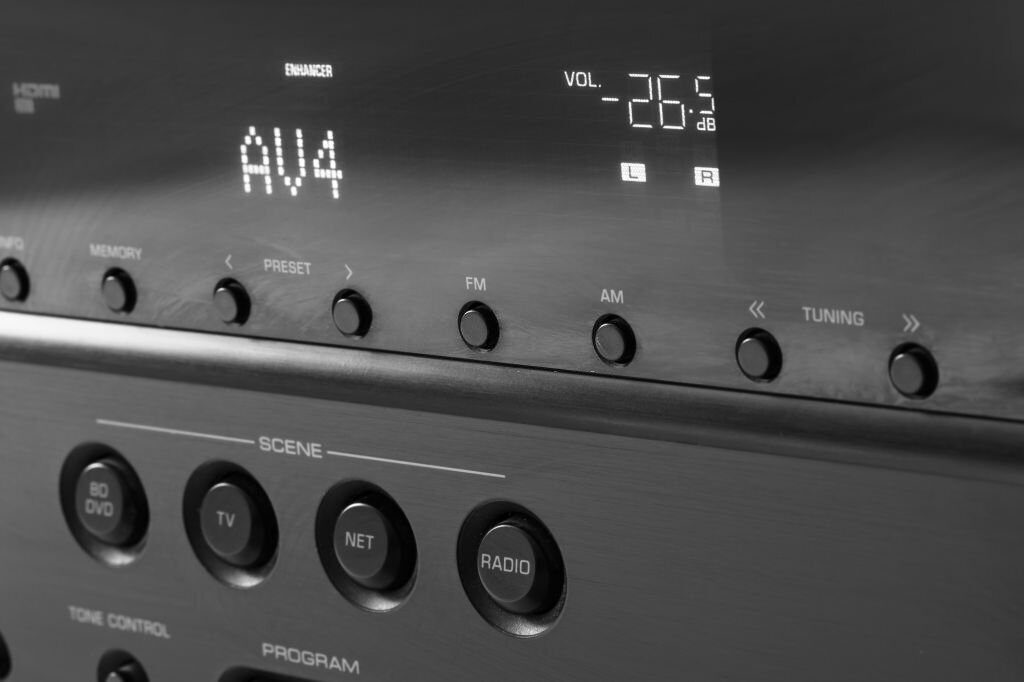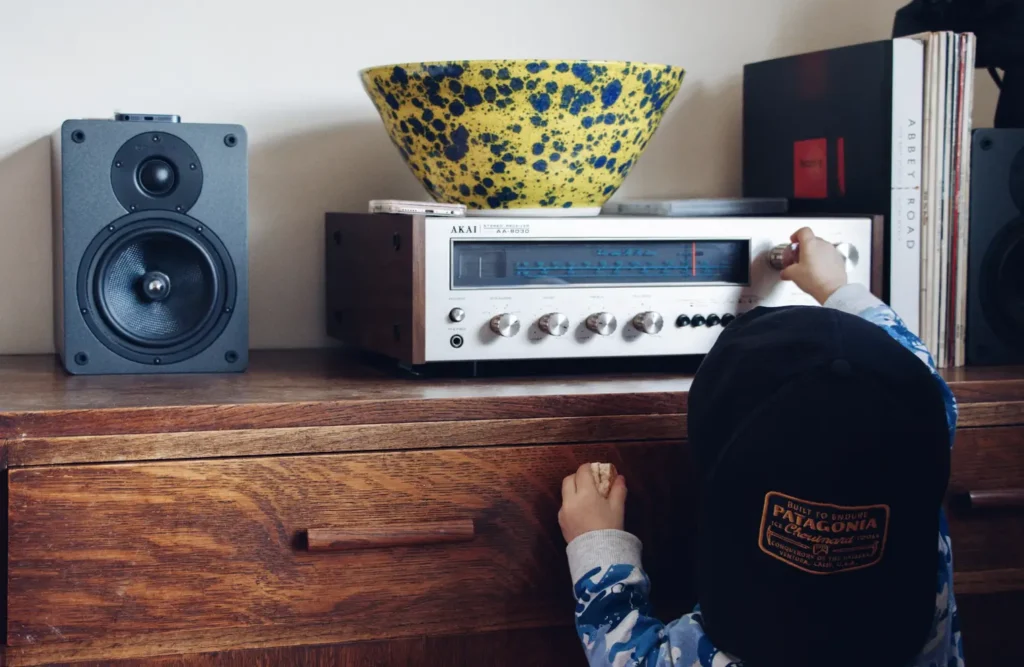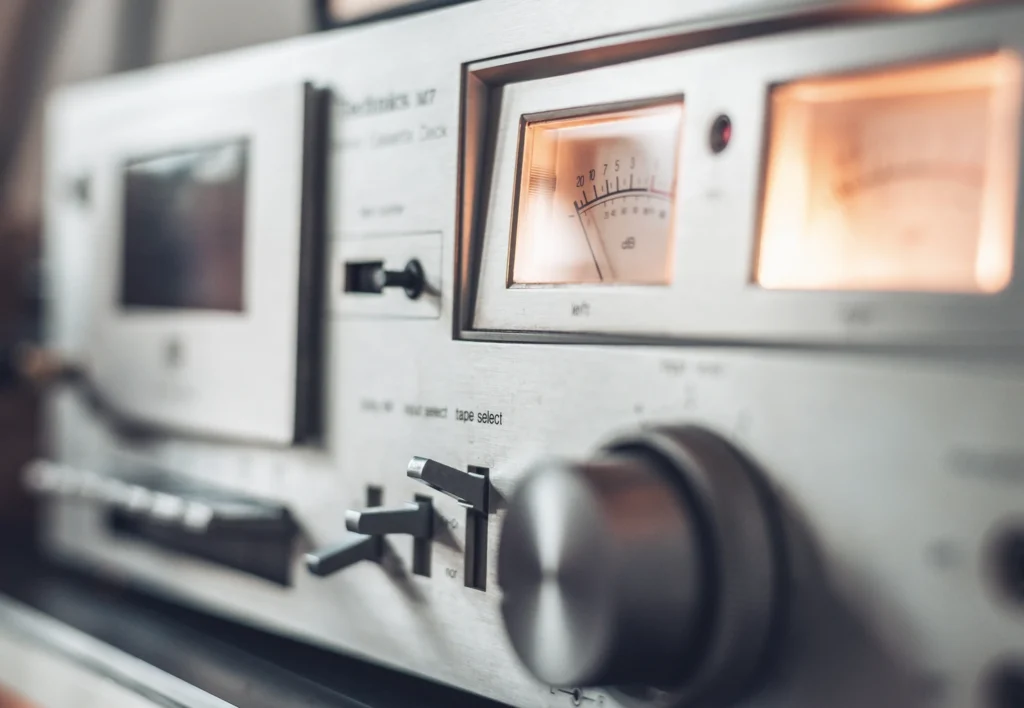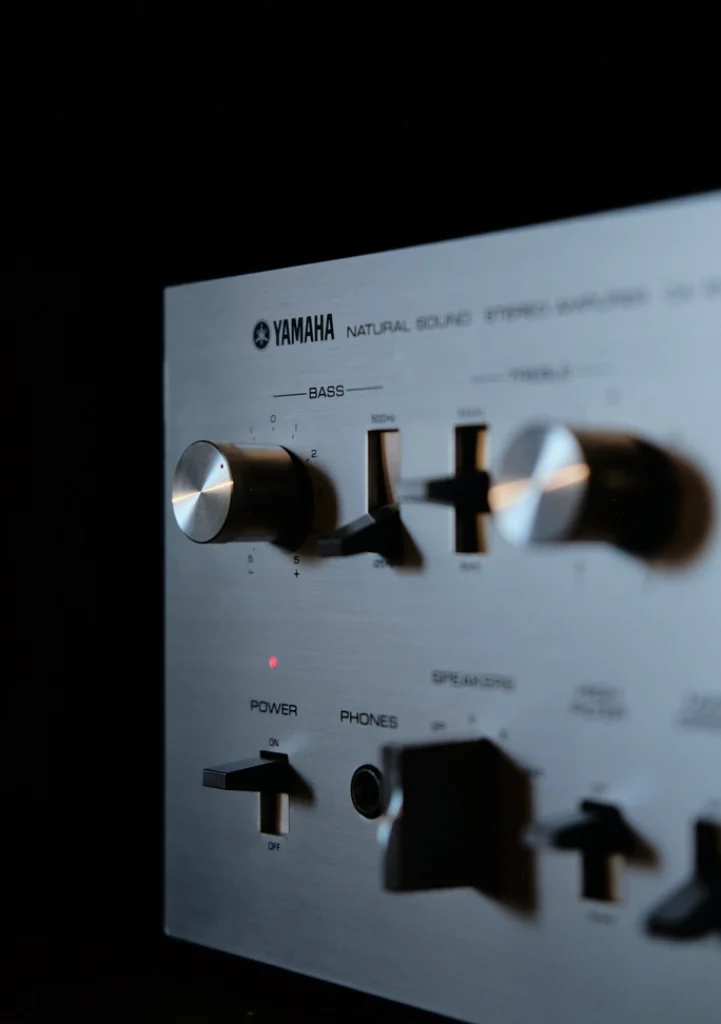Amplifier vs. receiver refers to two different devices. However, a lot of people confuse them and use them interchangeably. If you are wondering which device would be best for your system or curious about the difference between the two, this article is for you. Let’s scroll down to learn more!
Read more: Soundbar Vs Receiver
Overview: Amplifier vs. Receiver
What Is An Amplifier?

Amplifiers are designed to amplify sound. Their primary function is to receive the audio signal and send it to your speakers for louder and better sound.
This device is typically used by bands, performances, and art shows. Also, their smaller variants are found in wireless headphones and tiny speakers.
Basically, amplifiers can exist in any audio device. But the truth is that active speakers don’t need a separate amplifier as they feature a built-in amplifier.
Amplifiers are only necessary for the passive speaker where they deliver power.
What Is A Receiver?

Contrary to what people think, receivers are not the opposite of amplifiers. The receiver comes with an amplifier as well as different audio functionalities.
It typically features a radio, a tuner, an input selection, and other volume controls. Some sophisticated receivers even come with more features.
Receivers can look a lot like amplifiers, which is why many people get confused between the two. But a receiver will have more knobs and buttons, and it also features a video connection.
Amplifier vs. Receiver: Head-To-Head Comparison
Specifications
The receivers’ specs mainly cover:
- Output power.
- Frequency range.
- Harmonic distortion.
- Signal-to-noise ratio.
- Impedance and damping coefficient.
This device especially emphasizes delay time range, channel isolation, many sound field modes, etc. It also has more specs about the video part.
An amplifier has those specifications but emphasizes signal-to-noise ratio and harmonic distortion.
The Number of Channels

The receiver usually has four to thirteen channels, driving many speakers to generate a surround sound field.
On the other hand, the amplifier is typically two-channel. It amplifies the signals of the left and proper channels and pushes the corresponding speakers to produce a stereo sound field.
Read also: 2.1 vs 3.1 Channels Soundbar
The Sound Atmosphere
The receiver is built to generate a sound field. It emphasizes the orientation of the sound and simulates the listening environment’s atmosphere.
Amplifiers are mainly produced for high fidelity in sound reproduction, mainly for listening to human voices, music, and more, to pursue natural sound.
Amplifier vs. Reciever: Comparison Table
|
Parameters of Comparison |
Receiver |
Amplifier |
|
Interpretation |
This device includes an amplifier with extra functionalities like volume control, radio, input selections, preamp tuner, etc. |
This device amplifies an audio signal, making audio can be played from speakers. |
|
Inventor |
Marconi, Oliver Lodge, and Alexander Popov. |
Lee De Forest |
|
Invented |
1895 |
1906 |
|
All-in-one device |
Yes |
No |
|
Space consumption |
Less |
More |
What Should You Choose For Your System?

If you prefer to get radio capabilities or a single device for video and audio, a receiver will be your best bet. If not, we’d suggest choosing an amplifier.
Without additional circuitry for the video hardware and radio unit, amplifier manufacturers can improve the amp’s performance-to-price ratio and reduce the device’s physical space.
In other words, the amplifier is more focused on amplifying audio and will typically perform better than the equally-priced receiver.
Regarding audio purposes, you will likely gain a better product in one amplifier.
But it will be great to hold a single device to meet your home AV needs, and an AV receiver is a reasonable choice in this case.
Of course, you need to consider various specifications to consider when picking either a receiver or an amplifier for your speaker setup.
Those specifications include, but are not limited to, the following:
- Tone control.
- Power rating.
- Output impedance.
- Number of channels (mono, stereo, surround, and more.).
Amplifier vs. Reciever: Final Verdict

In summary, an amplifier is not the opposite of a receiver. They are simply not the same device and are two of the subcomponents of home stereo. In the audio industry, both came under the terminology which seemed quite similar but turned out to be far different.
To get the fun of watching movies in a home theater and listening to high-quality music at the same time, it is recommended for audiophiles with a budget to invest in both a power amplifier and a receiver.
When you watch a movie, the power amplifier will drive the main left and right channel speakers. In addition, set your receiver to direct through or bypass mode when you prefer to listen to music. Thanks for your time!






